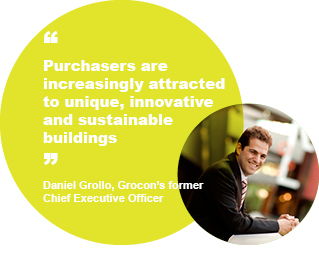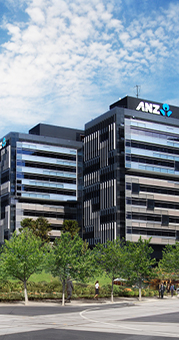Why own a green commercial building?

![]()
The benefits of green buildings
The business case for owning green buildings continues to stack up. Green buildings deliver a range of business benefits including:
> Operating efficiencies
> Higher return on investment
> Attract and retain tenants
> Environmental benefits
> Market recognition
> Higher return on investment
> Attract and retain tenants
> Environmental benefits
> Market recognition
Operating efficienciesGreen buildings are designed to be highly energy and water efficient, which makes them cheaper to operate.
|
|
||||||
![]()
Higher return on investmentGreen buildings deliver consistently higher returns on investment compared their non-green counterparts.
|
 |
![]()
Attract and retain tenants
Greener buildings help attract prospective tenants and retain existing tenants.
- The GBCA’s Valuing Green (2008) report found that green buildings attract better quality tenants, such as government and ‘top tier’ corporates with stable businesses and strong commitments to corporate social responsibility.
- The World Green Building Council’s Business Case for Green Building (2013) found that buildings with a green rating report an occupancy rate increase of up to 23%. The higher the rating, the higher the rental premium – with an average 3% increase in rent for each additional level of certification.
- Colliers International’s Office Tenant Survey (2012) found that 95% of tenants want to be in a green building, up from 75% two years earlier. ‘Green space’ is one of the top four attributes tenants look for – along with
Contact:
Rachael McGinley
Senior Manager - Strategy & Development
Green Building Council of Australia
Phone: 02 8239 6291
Email: rachael.mcginley@gbca.org.au
In this section
- Why design or build a green commercial building?
- Why design or build a green residential building?
- Why design or build a green school?
- Why design or build a green hospital?
- Why design or build a green public building?
- Why own a green commercial building?
- Why own a green residential building?
- Why own a green school?
- Why own a green hospital?
- Why own a green public building?
12

